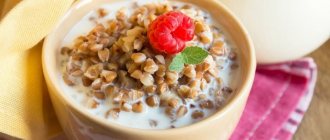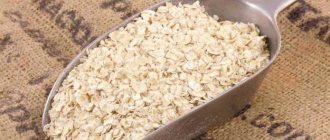Cocoa is a good way to normalize metabolism and eliminate excess weight, and the presence of polyphenols makes it possible to satisfy the feeling of hunger.
Cocoa powder has a unique chemical composition and is able to saturate the body with the fiber it needs and nutrients that a person who is losing weight often needs. In this article you will read about the positive properties of the drink, its composition, how many calories, and also what beneficial substances are contained in cocoa.
Benefit
The product is prepared from bean grains after pressing the oil and is healthy primarily due to its low caffeine content.
Using it, you can:
- lower blood pressure;
- strengthen memory;
- improve cerebral circulation;
- prevent the development of caries;
- strengthen the hair structure;
- cleanse the skin of toxins;
- relieve stress and fatigue;
- strengthen the skeletal system;
- normalize blood glucose levels;
- prevent the development of diabetes, cancer, cardiovascular diseases;
- fight anemia, bronchitis, asthma, colds;
- cleanse the body of cholesterol;
- slow down the absorption of carbohydrates into the blood, stabilizing sugar levels;
- restore damaged tissue;
- strengthen the musculoskeletal system;
- increase the level of endorphins in the blood.
In general, the product has a beneficial effect on the immune system, harmlessly activating body functions. The magnesium and zinc content promotes testosterone production in men. The chemical composition of cocoa powder contains many useful substances:
- cellulose;
- tannins;
- mineral salts;
- caffeine;
- starch;
- saccharides;
- water.
The benefits and harms of cocoa
The natural drink acts comprehensively in the body. Thanks to the high concentration of magnesium, it strengthens the cardiovascular system, reduces the risk of strokes, heart attacks, and atherosclerosis. The list of useful properties does not end there:
- removes harmful cholesterol;
- improves cerebral circulation;
- stabilizes blood pressure;
- improves cognitive functions;
- helps with stress, chronic fatigue;
- strengthens the musculoskeletal system;
- maintains acceptable blood sugar levels;
- slows down the absorption of carbohydrates;
- increases con in the blood;
- activates performance;
- strengthens local immunity.
Even if the caloric content of cocoa with milk and sugar is high if you want to lose weight, it is a reliable prevention of cancer, hemophilia, diabetes, and pathologies of the cardiovascular system. In addition, the drink helps in the treatment of bronchitis and bronchial asthma.
Remember: a glass of cocoa can be harmful to health, for example, provoke a severe allergic reaction in the form of skin rashes and hives.
The list of medical contraindications continues:
- stomach ulcer, duodenal ulcer;
- gout;
- sleep disturbance, insomnia;
- tendency to obesity;
- diseases of the digestive system.
In order not to disturb the child’s digestion, boiled cocoa to children under 3 years old, or first consult with a pediatrician.
Calorie content of cocoa powder
The product has high nutritional value: one hundred grams contains the following amounts of proteins, fats and carbohydrates necessary for a person:
| Content of nutritional components (BJU) | Quantity, gram/100 g |
| Belkov | 24,3 |
| Zhirov | 15 |
| Carbohydrates | 10,2 |
Cocoa powder has an average calorie content of 290–374 kcal per 100 grams. It is a rather energy-intensive product.
- One tablespoon contains 74 kilocalories, a teaspoon – 27 kilocalories. This caloric value depends on the type and brand of cocoa drink, as well as on the method of its preparation.
- A regular mug of a drink with milk with a fat content of 3.2% has 255 kcal, prepared with water - 100 kcal, dietary - 70 kcal.
Cocoa and diet
Calorie content of cocoa powder
Despite its fairly high energy value, cocoa powder is not regarded by nutritionists as a product dangerous for the figure. It can be safely included in diets.
Cocoa contains:
- proteins – 34%;
- fats – 47%;
- carbohydrates – 14%.
As you can see, the product contains few carbohydrates. This means that its use will not lead to extra pounds.
In addition, one cup of the drink can give a person a long-lasting feeling of fullness – up to 4-5 hours! Thanks to this, he can easily endure a strict diet regime.
Consumption of cocoa improves mineral, water, hormonal and protein metabolism. This gives a person strength and energy.
And due to the low calorie content of the drink, the body begins to melt fat reserves, which promotes weight loss.
In addition to all this, cocoa has the ability to invigorate a person and enhance his physical activity, making the diet much easier to tolerate.
Calorie content of Nesquik
The well-known delicacy based on Nesquik cocoa powder has a calorie content at an acceptable level.
- One hundred grams of this product contains 377 kcal.
- One serving has approximately 52 kilocalories, but by dissolving it in milk, you can increase this figure to 200 kilocalories.
- Since Nesquik is a typical chocolate dessert, one serving has only 0.6 grams of protein.
- One teaspoon of Nesquik contains 34 kcal. There are 94 kilocalories per tablespoon.
Benefits for women
Cocoa has the following positive effects on the female body:
- alleviation of unpleasant symptoms during premenstrual syndrome;
- relief of physical and mental stress;
- figure control;
- improved mood;
- replenishment of iron deficiency in the body.
Cocoa contains procyanidins and a number of other phenolic compounds that smooth out small wrinkles and rejuvenate the skin. This is due to the fact that these components bind collagen, which is responsible for maintaining the skin in an elastic state.
Melanin, another component of the product, helps protect the skin from the negative effects of direct sunlight. At the same time, the intensity of skin aging decreases and the risk of developing melanoma and other cancers decreases.
Vitamin K is responsible for accelerated healing of mechanical injuries and damage to the skin, and for tissue restoration. Due to the action of antioxidants, it is possible to cleanse the skin of toxins and impurities, which gives it a healthy appearance.
Thanks to regular consumption of cocoa, you can achieve stimulation of dormant hair follicles, as a result of which intensive growth of new hair begins. This effect can be achieved due to the action of nicotinic acid.
The effectiveness of the product is manifested not only internally, but also externally. Cocoa-based masks intensify blood circulation in the scalp, which allows nutrients to quickly penetrate the hair roots.
Use during pregnancy and lactation
During pregnancy, women are usually advised to refrain from consuming the product. This is especially important if the expectant mother suffers from diseases and health problems such as:
- high blood pressure;
- high uterine tone;
- kidney diseases.
Excessive consumption of cocoa helps remove calcium from the body of both the mother and the unborn fetus.
The product is able to give strength and relieve nausea, so in some cases its use in small dosages is allowed for pregnant women. Each such situation should be considered separately by a qualified specialist.
It is not recommended to take cocoa until 3 months have passed after giving birth. Only after a specified period of time is it possible to gradually return the product to the diet, starting with a few g per day. If there is the slightest sign of an allergy in your baby, you should immediately stop drinking the drink until the child becomes older.
Calorie content of cocoa with milk and sugar
By adding two teaspoons of sugar to a drink brewed with milk, you can greatly increase the calorie content.
- A 100 ml cup of powder brewed in milk with two teaspoons of sugar contains 85 kilocalories.
- The milk-soluble powder has a calorie content of 72–75 kcal.
To reduce energy value and calorie content, you can reduce the fat content of the milk used.
Benefits for children and the elderly
Benefits of the product for the child's body:
- strengthening and development of mental activity;
- restoration of strength after illness;
- increased mood and general tone;
- treatment of cough and a number of other colds.
Cocoa powder, butter and other products based on it should be introduced gradually into the child’s diet. There is no need to try to do this before the baby turns 3 years old. If you have allergic reactions or other manifestations of individual intolerance, you should stop giving the drink.
Exceeding the required dosage can lead to a decrease in calcium levels in the child. For a young body with a developing skeletal system, this circumstance can have negative consequences.
Children with hyperactivity are also advised to refrain from consuming the product.
Older people are advised to replace coffee with cocoa in their diet and drink it regularly. The benefits of its use in this case are as follows:
- stimulation of cerebral blood supply;
- strengthening memory;
- getting out of a state of depression and despondency;
- maintaining mental clarity;
- strengthening the walls of blood vessels.
Consumption standards
The amount of substances necessary for a healthy person contained in 100 grams of product (289 kcal) are:
- 24.3 g of proteins (32% of normal weight, 11.1% of the required energy value);
- 15 g fat (26.8% of normal weight, 9.3% of required value);
- 10.2 g carbohydrates (4.7% of normal weight, 1.6% of required value);
- 35.3 g dietary fiber (176.5% of normal weight, 61.1% of required value);
- 6.8 mg of vitamin PP, NE (34% of normal weight, 11.8% of the required norm);
- 655 mg phosphorus (81.9% of normal weight, 28.3% of required value).
You should avoid using it if you have allergies. The risk of its occurrence may be associated with low-quality raw materials and harmful substances used in their production. Also excluded from use by people with stomach ulcers, gout, or insomnia. Not recommended for pregnant women and children with increased activity.
The question of calorie content is relative, from a medical point of view. In addition to the content of energy-releasing substances, you should pay attention to their absorption by the body. Complex multi-stage biochemical reactions involving amino acids and vitamins primarily determine the usefulness of this tasty and nutritious drink.
Rating
The nutritional value
Cocoa contains antioxidants, vitamins, and essential minerals. The chemical composition of beans is a real wealth, the basis of which is the most useful and even unique components, including:
- epicatechin - when regularly released into the blood, reduces the incidence of the most common diseases of our time by 10% - stroke, heart attack, diabetes and cancer;
- cocohil - promotes the restoration and development of damaged cells;
- adrenaline - provides additional blood flow to the muscles and brain, increasing muscle tone, mental abilities and speed of reaction;
- arginine - dilates blood vessels, improves heart function, regulates blood pressure, increases libido and concentration of sexual energy;
- tryptophan - improves mood, helps fight eating disorders (anorexia, bulimia, obesity), alcohol and nicotine addiction;
- theobromine and caffeine - produce a stimulating and exciting effect;
- fiber – cleanses and improves intestinal motility, provides quick and long-lasting satiety.
Important! Only organic cocoa beans fully possess all of these beneficial properties. A significant part of the valuable substances remains in non-deodorized oil and natural powder. If chemical components, flavor and aroma enhancers are added to any of these products, then their benefits are practically lost.
Proteins fats carbohydrates
The ratio of BJU, as well as the calorie content or composition of nutrients, varies significantly depending on the type of raw material.
Beans contain:
- proteins – 12.8 g;
- fat – 53.2 g;
- carbohydrates – 9.4 g.
In powder:
- proteins – 24.3 g;
- fat – 15 g;
- carbohydrates – 10.2 g.
In fat-free powder:
- proteins – 22 g;
- fat – 11 g;
- carbohydrates – 12 g.
In oil:
- proteins – 0 g;
- fat - 99.9 g;
- carbohydrates – 0 g.
Thus, from cocoa beans, by separation, both a high-quality protein product - powder, and almost pure vegetable fat - cocoa butter are obtained. In both cases, the calorie content can be called healthy, since it contains no empty calories and contains few carbohydrates, which are also complex.
Macro- and microelements
The mineral composition of cocoa includes a lot of valuable elements that have a variety of beneficial effects on human health:
- molybdenum – regulates oxidative processes, promotes the absorption of vitamin C, activates the synthesis of amino acids in the body;
- fluoride - ensures healthy bones, teeth, hair, is directly involved in hematopoiesis, alleviates the symptoms of osteoporosis, accelerates the absorption of iron;
- manganese - helps normal development of bone tissue, strengthens the immune system, helps normalize digestion, insulin and lipid metabolism;
- copper - activates the construction of proteins and enzymes, participates in cell development processes, normalizes hematopoiesis, promotes the conversion of iron into hemoglobin;
- zinc - helps the proper formation of bones, increases visual acuity and memory, relieves increased fatigue;
- iron acts as a catalyst for oxygen metabolism, increases hemoglobin levels, relieves headaches and irritability, and participates in respiratory processes;
- sulfur - slows down aging, eliminates inflammation, protects against adverse environmental factors, strengthens local immunity;
- chlorine - actively participates in the digestive processes, stimulates the secretion of gastric juice, normalizes its acidity, prevents dehydration of the body, helps remove carbon dioxide, waste and toxins from cells and tissues, promotes the normal production of red blood cells;
- phosphorus - normalizes normal growth, strength and absence of deformation of bones and teeth, participates in almost all biochemical reactions;
- potassium - is responsible for the normal functioning of the cardiovascular system, brain, kidneys, liver, muscle tissue and endocrine glands, stops the development of atherosclerosis, relaxes muscles and relieves muscle spasms, removes harmful substances;
- sodium - have a powerful effect on all cells and intercellular fluid;
- magnesium – controls the health and functioning of the heart, prevents the development of arrhythmia, normalizes heart rhythm, and participates in the vital processes of the whole organism;
- calcium - maintains a healthy musculoskeletal system, teeth and nervous system, prevents the development of multiple sclerosis, osteoporosis, osteomalacia or adult rickets.
All of these elements are present in cocoa in an easily digestible form, and therefore have a more pronounced effect than taking mineral preparations. In addition, even with increased consumption of this product, an overdose is impossible, since the body itself regulates the content and removes the excess.
Vitamins
The presence and variety of vitamins in cocoa is in no way inferior to the mineral components of the composition. Among the most useful are:
- E is considered the main vitamin of youth, actively resists premature aging, protects cells from negative external influences, ensures the normal functioning of the nervous system and the female genital area;
- PP - actively participates in oxidative, respiratory and many other internal processes, has a beneficial effect on the blood vessels of the brain, and participates in metabolism;
- B9 - directly affects the development of the body, ensures the health of the immune, circulatory and nervous systems, participates in digestive processes, is responsible for the production of the hormones serotonin and norepinephrine, directly affecting the psyche and mental activity;
- B6 - improves the processes of breakdown of lipids, proteins and sugars, ensures timely supply of energy, accelerates reaction speed, eliminates insomnia, accelerates the process of natural synthesis of magnesium;
- B5 - takes part in all internal processes, especially in oxidative reactions and acetylation, prevents the development of cardiovascular diseases, colitis and allergies, improves brain function;
- B2 - directly involved in the production of hormones, the formation of red blood cells, the breakdown of basic macronutrients, and promotes constant cell renewal;
- B1 - participates in the conduction of nervous excitation between neurons and cells, protects cell membranes from the harmful effects of peroxide decomposition products;
- A - has a powerful antioxidant effect, participates in redox reactions, regulates protein synthesis, normal metabolism and the functioning of cell membranes, is responsible for the health of eyes, bones, hair and skin;
- beta-carotene - improves immunity, protects against radicals, relieves skin problems, increases visual acuity.
The general effect of the vitamin complex contained in cocoa, with regular consumption of products from it, has a strong positive effect on well-being, activity and appearance. At the same time, you should not get too carried away with the chocolate taste, optimal calorie content and mass of beneficial properties of such a dessert. Cocoa can cause allergic reactions and, in addition, is contraindicated in some cases - with high blood pressure, a tendency to nervous disorders and diseases of the central nervous system. The recommended daily intake of the drink is 2 cups per day. With such consumption, the product will really be useful and will help solve or prevent some health problems.
Benefits for weight loss
Despite its high calorie content, cocoa is not one of the foods prohibited in the fight against excess weight. There are special diets based on powder. The value of cocoa in this case is due to its ability to saturate the body with fiber and other beneficial substances, which people often lack when losing weight.
Due to the content of polyphenols, the drink helps satisfy the feeling of hunger, which is very important in the fight against excess weight. In this case, it is recommended to prepare the product without sugar or add a small amount of sweetener or honey.
Cocoa calorie content dietary properties
Cocoa diet.
The energy value of the drink allows it to be consumed by people on a diet. It has enough dietary fiber and protein and relatively little fat. In addition, it contains polyphenols, which provide a long-lasting feeling of satiety.
If you want to lose weight, you can drink cocoa no more than once a day. The optimal time is the morning hours, when the body needs energy. When cooking, it is recommended to replace sugar with honey. There is no danger of excess calories: 100 ml of water drink contains from 22 to 80 kcal - this depends on the preparation method.
What are the benefits of cocoa?
The vitamin composition of cocoa powder is presented:
- niacin;
- retinol;
- nicotinic acid;
- beta-carotene;
- folate;
- tamine;
- alpha-tocopherol;
- riboflavin;
- pyridoxine;
- pantothenic acid.
The most important thing in cocoa is dopamine. This substance lifts your spirits and gives you a charge of positivity. This is why they love the drink. Theobromine, also found in brown powder, is a natural antispasmodic that helps fight coughing attacks. In addition, it contains antioxidants and a large number of other beneficial substances. This causes a number of positive effects that cocoa has on the adult body:
- strengthens and increases the elasticity of vascular walls;
- prevents heart attacks and strokes;
- stimulates the immune system;
- reduces blood cholesterol levels;
- eliminates the consequences of chronic fatigue syndrome;
- inhibits acute manifestations of diabetes mellitus;
- has an anticarcinogenic effect;
- increases the activity of the cerebral cortex;
- accelerates metabolic processes in the body and cellular metabolism.
Main types of cocoa
Cocoa powder has been popular for more than one generation and today still remains a fairly popular product. Some people like the drink in granules, others prefer cocoa beans for weight loss, while for others a standard powder is enough. The third type of drink is also the most accessible - it is often sold in ready-made, dosed bags with sugar and milk. Therefore, everyone chooses a product according to their tastes.
Cocoa powder has a relatively low energy value. The calories of a cocoa drink depend on its quantity: on average, 100 g of mixture contains from 270 to 300 kcal. Considering that most people prefer to measure portions with spoons, you should know: a teaspoon contains 9 kcal, and a tablespoon contains 25 kcal. Due to the fact that few people like to use powder diluted with water, many people add the following to their cocoa drink:
- jam;
- milk;
- sugar;
- cream, etc.
By adding something sweet to the drink, we greatly enhance its taste, but at the same time we also increase the number of calories in one cup of our cocoa.
Advice from nutritionist Irina Shilina Healthy eating is incompatible with strict dietary restrictions, malnutrition and prolonged fasting. Today there is no need to strive for abnormal thinness by depriving yourself of food! Check out the latest weight loss techniques for 2021. Find out the secret ->
Product value
100 grams of cocoa powder contains:
- 24.3 grams of protein;
- 15 grams of fat;
- 10.4 grams carbohydrates;
- 35.3 grams of dietary fiber;
- 5 grams of water;
- 6.1 grams of ash;
- 3.9 grams of organic acids.
The product also contains starch, dextrins, monosaccharides, disaccharides, saturated fatty acids. Macro- and microelements are presented:
- zinc;
- potassium;
- fluorine;
- calcium;
- molybdenum;
- magnesium;
- copper;
- sodium;
- manganese;
- gray;
- iron;
- chlorine;
- phosphorus.
Benefits of cocoa
The following benefits of cocoa have been proven:
- the drink is rich in antioxidants, which are useful for maintaining the health of the vascular system, heart, and preventing the development of oncology;
- Cocoa magnesium helps improve the functioning of the heart muscle;
- The caffeine of the drink has an invigorating effect;
- the product contains a lot of serotonin, a substance that helps cope with stress, apathy, and bad mood;
- cocoa vitamins are useful for maintaining the health of the skeletal system, hair and nails;
- the presence of polyphenols in the composition allows you to quickly reduce hunger with the help of cocoa;
- The properties of cocoa to reduce blood pressure and stimulate cerebral circulation are known.
Cooking recipes
We will tell you how to make delicious cocoa with milk. The calorie content of such a drink will be 64.2 kcal per 100 ml of drink.
You will need:
| Cocoa powder | 20-25 g |
| Water | 210-220 ml |
| Milk | 100-120 g |
| Sugar | 20-25 g |
Cooking:
- Boil water, reduce heat to low.
- Mix sugar and cocoa powder.
- Add milk to the water, then gradually add the cocoa and sugar mixture.
- Stirring, bring the drink to a boil, remove from heat and let steep for 5-7 minutes.
What nutritionists say
Cocoa is a controversial product. Many medical nutritional systems prohibit it as such, but in some it is still allowed, albeit in very small quantities. Doctors are sure that until puberty it is better not to include cocoa in a child’s diet at all, as this can lead to a delay in the development of the baby’s normal hormonal levels. But such fears do not have serious and sufficient scientific evidence.
It is impossible to lose weight on cocoa, especially if it is cooked with milk and you put a lot of sugar in it. This is a tricky drink that usually doesn't even count in your daily calorie count. However, the body perceives it precisely as food, and with insufficient physical activity, this same cocoa is deposited in fat folds no worse than fast food.
However, nutritionists believe that one cup of aromatic and sweet drink a day is quite capable of compensating for cravings for sweets. Therefore, it is recommended to drink it for those who have lost weight and want to maintain the result for as long as possible. We remind you once again that it is important to remember moderation.
In addition, cocoa has a magical feature - this delicacy gives incredible warmth and improves your mood. This way, you worry less, enjoy life, and you don’t have the need to eat stress, disrupting all the results achieved on the way to a slim figure.
Experts in the field of weight loss recommend treating brown powder as a substitute for sweets and excess food. To maintain your figure, you can safely include it in your daily healthy and nutritious diet.
Components and calorie content of the drink
The powder is prepared by processing refined cocoa beans, whose calorie content is 607 kcal. Cocoa calorie content, dietary properties - on average 235-375 kcal per 100 g. The indicator varies depending on the amount of residual fat. In accordance with this, the product is divided into the following categories:
| Type of cocoa | % fat | Energy units | ||
| 100 g | 1 tbsp. | 1 tsp | ||
| Low fat | Up to 14 | 235 | 59 | 22 |
| Bold | 15-20 | 300 | 75 | 26 |
| Fatty | 20 | 374 | 94 | 37 |
The final calorie content is affected by additives that the manufacturer may include in the product. For example, Golden Label cocoa has a calorie content of 350, Nesquik has 379 kcal, and Kommunarka brand has 364 kcal.
There are many recipes for making cocoa. In addition to powder, water, milk, cream, spices, sugar, honey, bananas, and dried fruits are used. All components (except water) affect the final calorie content of the drink.
Cocoa with milk and sugar per 100 grams
Cocoa with milk.
The energy value of a drink brewed according to a traditional recipe can reach 250 kcal/100 g. This high figure is due to the presence of sugar, the calorie content of 1 tbsp. l. which is 20 kcal. Milk also increases calorie content depending on its fat content.
To prepare the drink you should take:
- milk – 1 l;
- cocoa – 3 tbsp;
- sugar – 3 tsp.
Heat milk in a saucepan. Mix sugar and powder separately, add 100 ml of hot milk and stir until the components dissolve. Add the mixture to the pan and bring to a boil. After 1 minute, remove the foam and pour into mugs.
3 servings of this drink account for almost half of the calorie content of the daily diet. The optimal amount is 1 cup (200 ml) in the morning and one in the afternoon as a snack.
Cocoa without sugar per 100 grams
The minimum calorie content of 100 g of a classic drink made with milk without sugar is 46 kcal. Much depends on the fat content of the chosen base. For example, if you take milk with a fat content of 1.5% and 20 g of cocoa, the final calorie content will remain 57 kcal/100 g.
To prepare, bring the milk to a boil and add the powder, stirring gently. Boil again and leave for 5 minutes. You can add a pinch of cinnamon, chopped half a banana or chopped date to the finished cocoa (this will add approximately 46 kcal).
Cocoa in water per 100 grams
Cocoa on water.
The energy value of such a drink depends on the amount and calorie content of cocoa powder, as well as the addition of sugar, spices, and dried fruits.
When cooking one portion according to the traditional recipe you will need:
- 1 tbsp. cocoa powder;
- 300 ml water;
- 1 tbsp. Sahara;
- chocolate – 20 g.
Boil water, add sugar and cocoa, mix well and heat. At the end, add the grated chocolate, stir until it melts and remove the drink from the heat.
The calorie content of 100 g of this drink is about 82 kcal. You can reduce it by removing sugar and chocolate. Then the calorie content will depend only on the type of powder.
Cocoa "Nesquik" per 100 grams
The product from Nestle includes sugar, iron orthophosphate, vitamin complex, salt, cinnamon, soy lecithin. Calorie content 100 g – 375 kcal. To prepare a portion, pour the powder (1-4 tsp) with a glass of water or milk:
- Water drink. One teaspoon of powder contains 27 kilocalories; water has no calorie content. It can be calculated that the calorie content of a drink prepared from 3 spoons of powder will be 81 kcal.
- With milk. The calorie content of milk with 1.5% fat content is 44 kcal, and with 3.2% fat content it is 59 kcal. A drink made from milk with a fat content of 3.2% and 3 tsp. Nesquik cocoa has an energy value of 140 kcal.
The more powder you add to the cup, the richer the taste the drink will have, but the higher its calorie content.











